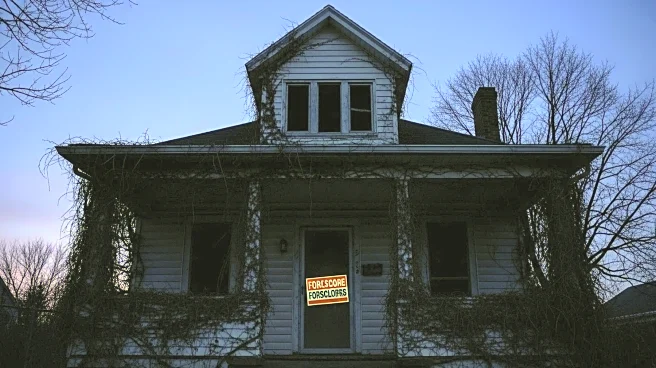What's Happening?
Zombie foreclosures, referring to vacant properties in foreclosure, are on the rise across the United States. According to a report by ATTOM, 1.4 million residential properties are currently vacant, with significant increases in zombie foreclosures noted in several states. Colorado leads with a 115% increase, followed closely by Washington state at 114%. These vacant properties can negatively affect the value of surrounding homes and have broader implications for local housing markets. ATTOM's data indicates that 3.38% of properties in foreclosure are considered zombie homes, marking a slight increase from previous quarters. This trend coincides with a 20.9% year-over-year increase in active home inventory for sale.
Why It's Important?
The rise in zombie foreclosures poses challenges for the U.S. housing market, potentially leading to decreased property values and destabilizing local economies. Vacant homes can deter potential buyers and investors, impacting community aesthetics and safety. States experiencing increases in zombie properties may face difficulties in revitalizing neighborhoods and maintaining property values. Conversely, states like Georgia, New Jersey, Illinois, and New York, which have seen decreases in zombie rates, may experience positive trends in their housing markets. The overall increase in active home inventory suggests a shift in market dynamics, possibly affecting housing affordability and availability.
What's Next?
As zombie foreclosures continue to rise, stakeholders including local governments, real estate professionals, and community organizations may need to implement strategies to address vacant properties. This could involve policy changes, community engagement initiatives, or investment in property rehabilitation. Monitoring trends in states with decreasing zombie rates could provide insights into effective measures for managing vacant properties. The housing market's response to increased inventory levels will be crucial in determining future property values and market stability.














